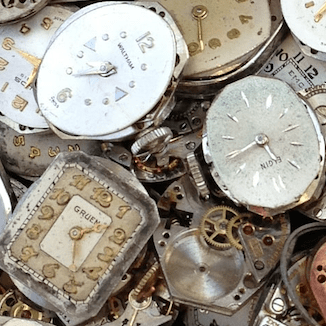Our annual countdown of the people, music, ideas, and news that impacted the year, concludes with

By Paul Marszalek
TheTop22.com
#1 Our Collective, Super-Colossal Misuse of Valuable Time
Omicron feels a lot like Lucy holding the football for Charlie Brown. Just when we’re ready to get back in action, well…
Even when Omicron passes, and it will, and even when there’s a new booster for it, and there will be (as soon as March), we’ll all still know that there’s a possibility that Lucy will yank the ball away just as we’re running up for the kick.
That’s why we see so many good companies making pivots. There’s the relatively simple pivot of restaurants emphasizing delivery and outdoor dining or major studios like Disney and Warner getting into a digital streaming knife-fight with the viability of theater-going in question.
Another is the chip shortage changing the auto industry. Tesla has been affected less than other automakers because they write their own software for chips. When specialized chips weren’t available, they grabbed lower-end chips and just wrote new software for them. Other manufacturers couldn’t do that — but that pivot is all under the hood and hard to see.
The automobile pivot we will soon see is the one where the size of auto dealerships shrinks. With the chip shortage reducing manufacturing capacity, people need to wait a bit for the car they want. The good news is, the car they get is exactly the car they ordered. If consumers can be trained to wait a month for their car, and car companies think can be, then dealers won’t need to flood their lots with scores of vehicles of different colors, trim levels, and engine sizes. They do this because they’re essentially guessing what the buyer wants. It’s a huge waste that results in price-slashing Toyotathons whereby the dealer needs to clear the lot of cars that don’t sell.
Moving forward, a dealer will have a few cars on hand for those who want it immediately, but everyone else will get their somewhat bespoke vehicle in a few weeks. Win-win.
Point is, every business is re-thinking its future, and making moves to keep current customers, attract new ones, and grow revenue. It’s a fascinating and exciting time.
Which poses the question: What has radio been up to in terms of a pivot? Perhaps podcasting, but only a very few very large companies will be successful in this increasingly flooded space.
My observations and conversations at the station level seem to point to an industry still struggling to return to what it was doing pre-COVID. Many stations seem to think, “If we can just get back to 2019, that’d be great.”
However, if you spent the last two years trying to figure out how to get back to 2019, you were part of Our Collective, Super-Colossal Misuse of Valuable Time.
I’ll give you the first year of COVID — we all needed to figure out how to survive and keep the ball rolling.
But two years of treading water? As they say on Monday Night Football, when pro athletes fail at fundamentals, “C’mon, man!”
Pre-COVID, public radio was all about the hiring of whiz-bang Chief Content Officers and Presidents of Content. On the commercial side, they seem to hand out VP/Programming stripes like they’re participation trophies — but those stripes should mean that the bearers are enabled to improve the product.
So: Where are the deliverables? Who at the station is actually charged with owning the state of the product in 2022?
Do we really think our audiences and members and advertisers will happily join us in our trip back to 2019? Will a slightly inferior version of our 2019 station get the job done?
I don’t think it will, because, at risk of being snarky, here’s a little inside information: Advertising agencies can actually hear your radio station. They can hear a product that is in reverse. They can hear that virtually the entire AM band has become a cesspool.
Imagine yourself as a buyer and listen to your station. Is it entertaining, fresh, compelling, friendly, local, and full of new features? Is it enough to get the sale?
It’s easy to point the finger at commercial radio, but there are too many public Triple A stations with .2s and .4s and pledge drives coming up short as well. These stations are in real trouble, and blaming COVID no longer cuts it.
Radio business fundamentals were not exactly favorable in 2019. We’ll will need to claw back every single listener and advertising dollar, much less expand the user base. This will require significant efforts to improve talent, create top-of-mind content offerings, and generally boost the entertainment value.
To do this, companies are going to need to take a hard look at what business schools refer to as their deliberate strategies, resource allocation processes, and return on net assets. Then, stations and groups will need to adopt some disruptive strategies.
The medium seems ill-equipped to respond. Therefore, the first pivot radio needs to make is internal: fresh talent on both sides of the mic — to ideate, create, and disrupt.
Imagine what radio could be!
Photo by Heather Zabriskie on Unsplash
 -The Top 22 – Triple A, Indie, Alternative Rock
-The Top 22 – Triple A, Indie, Alternative Rock


Good insights and call to action. A clarification about the auto dealership model though, their job is to buy all of the cars produced to take those cars off the manufacturer’s books. A custom ordering process would negate the need for dealerships really, just the way Tesla has done.
Hey Gregg,
Exactly – you make my point. Dealers make money on service, not selling cars. Tesla outsold Mercedes and BMW last year in the U.S., so the model is more than proven. Dealers will have much less inventory on hand moving forward.